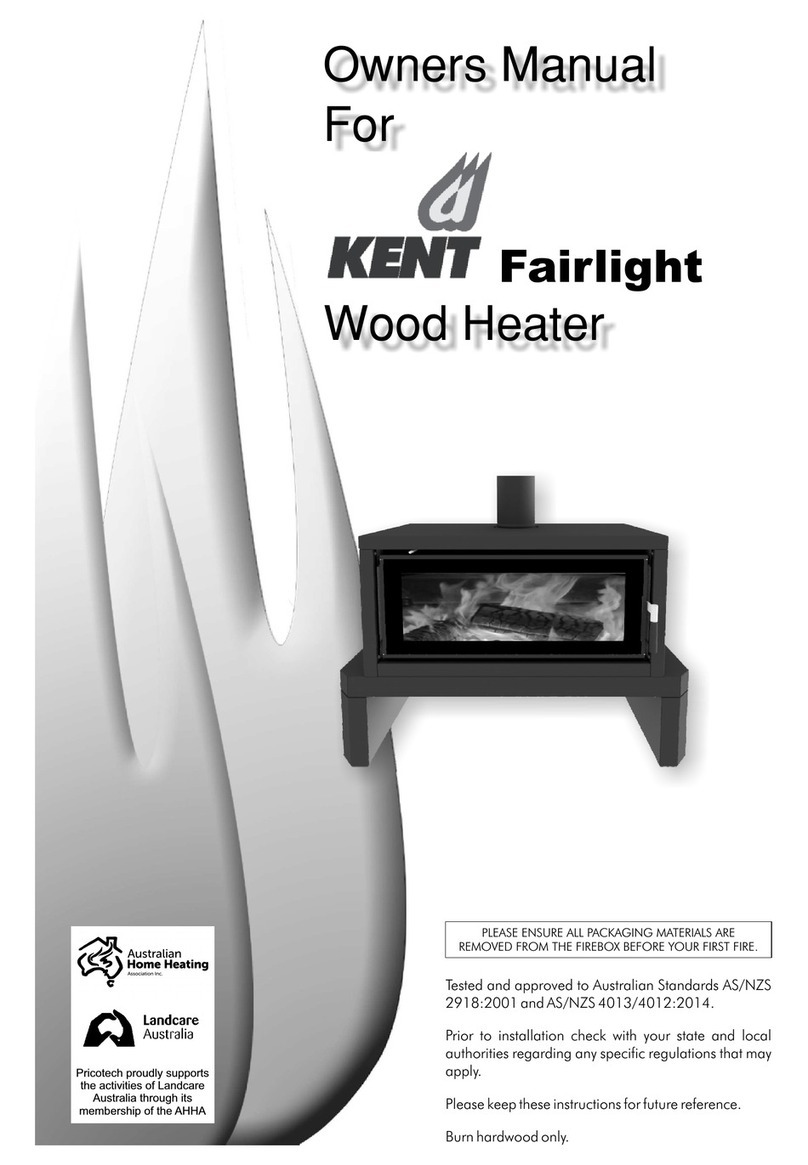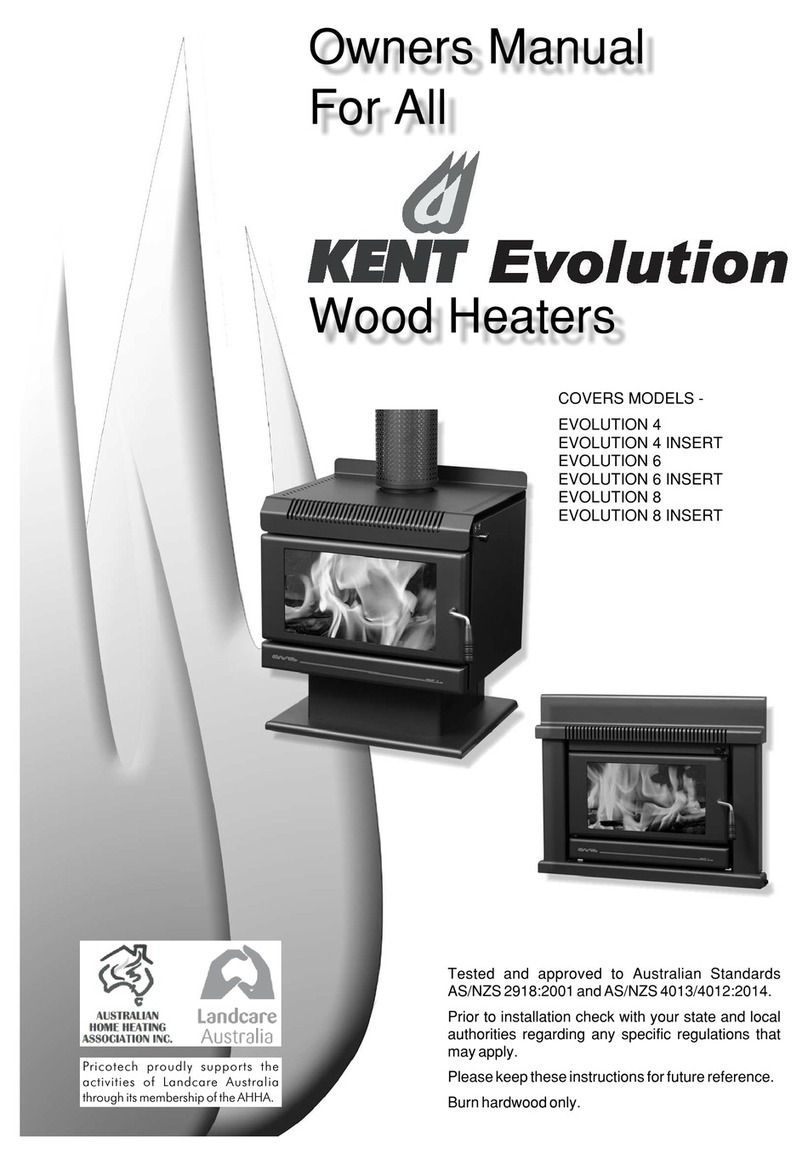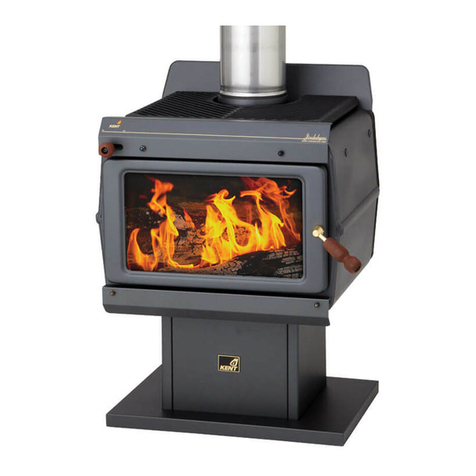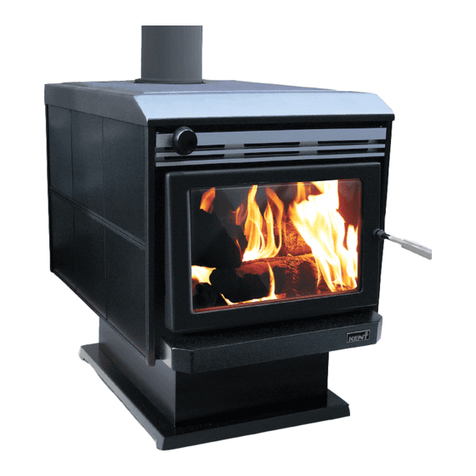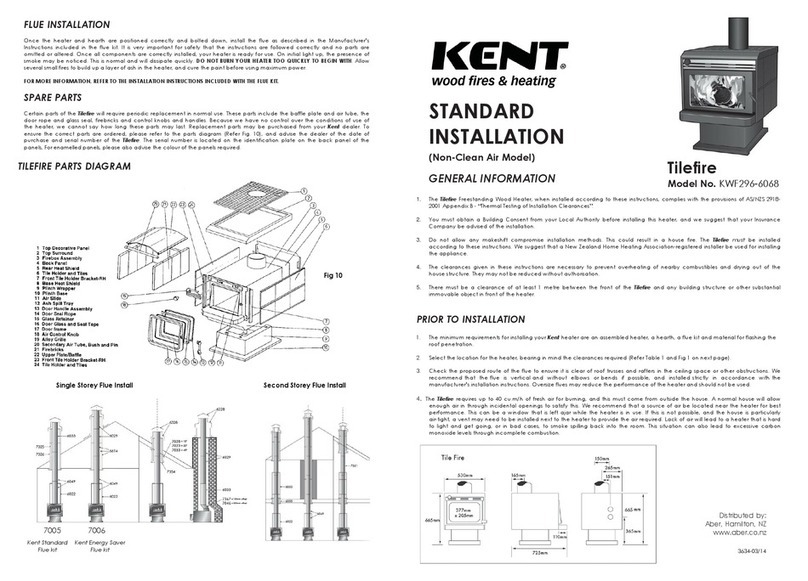
6
DOOR HANDLE AND DOOR
The door handle is pre-fitted and should not
require any adjustment on assembly of the fire.
Any adjustment required to maintain the correct
fit of the door is made at the door catch pin on
the right side of the door lip. To adjust the fit of
the door catch, loosen the lock nut and turn the
catch pin to loosen or tighten the fit. Re-tighten
the lock nut. Refer Fig 3.
TOPOGRAPHY OF THE LAND
The slope and position of the land in relation to the home has a bearing on how the wind
will interact with the fire and flue system. Care needs to be taken to ensure that the flue
termination is in the correct position to maximise performance.
Seismic resistant
bolt location
Door adjustment
catch pin
FIG. 3
Before the wood fire is used, ensure that a Compliance Certificate (supplied by
a Registered Installer and/or Territorial Authority Inspector) is obtained for the
user. We encourage initial demonstrations on how to light and operate the fire to
ensure the user can confidently operate the fire for safe and efficient performance.
Determine the total length of flue pipe and outer casing required by measurement.
Prepare chimney for accepting flue, and fixing of outer casing to chimney crest.
Install the selected Kent wood burner into the prepared fireplace. Once in position and
level fix the fire to the base of the fireplace enclosure with suitable anchors through the
supplied fixing points in the base of the wood burners outer box.
Assemble the flue pipe lengths with the swaged ends of the upper sections inside the
plain ends of the lower pieces. This may be done on the ground and then the whole
length lowered into the chimney, or assembled length by length from the top of the
chimney. Note: Drill and fix each length with three stainless rivets or self-tapping screws.
It is important that each flue pipe joint is sealed with commercially available flue sealing
compound, including the joint between the flue spigot and the first length of flue pipe.
Locate the flue or adjustable bend into the flue outlet of the heater.
Ensure the top of the casing terminates at a point complying with the general guidelines
noted previously and that the flue pipe extends above the chimney casing by 180mm.
Secure the top spacer bracket to the flue pipe and ensure the slots fit snugly inside the
chimney liner.
Secure outer liner to top of chimney and cement into position with mortar or other suitable
sealing compound ensuring that there are no gaps and a water tight seal is achieved.
Slide the flashing cone over the top of the flue pipe, until it rests firmly over the top spacer.
Secure with stainless rivets or screws.
Fit the cowl to the top of the chimney liner. Do not secure this, as it must be removable
for servicing the flue.






